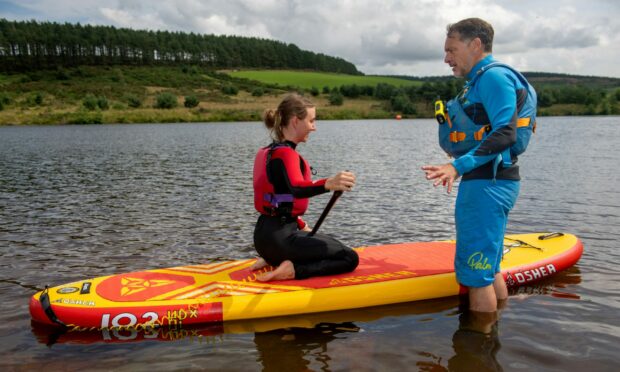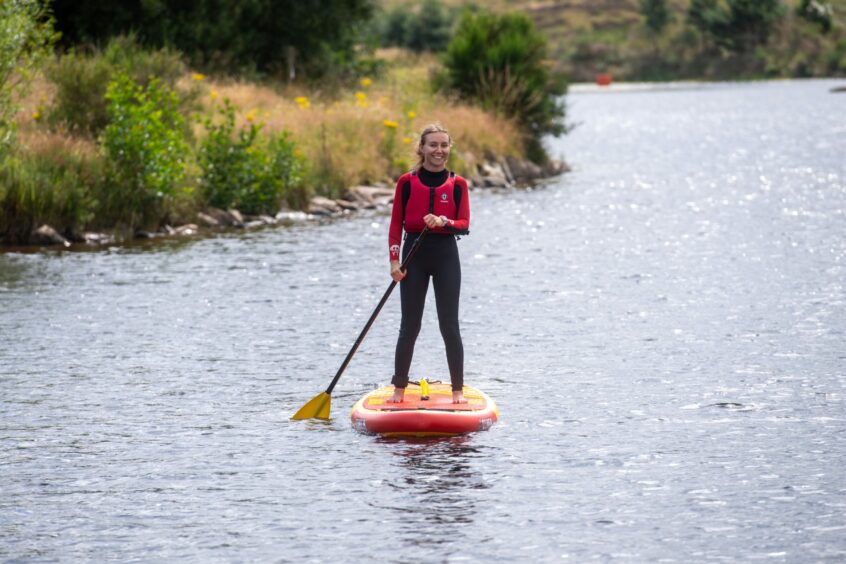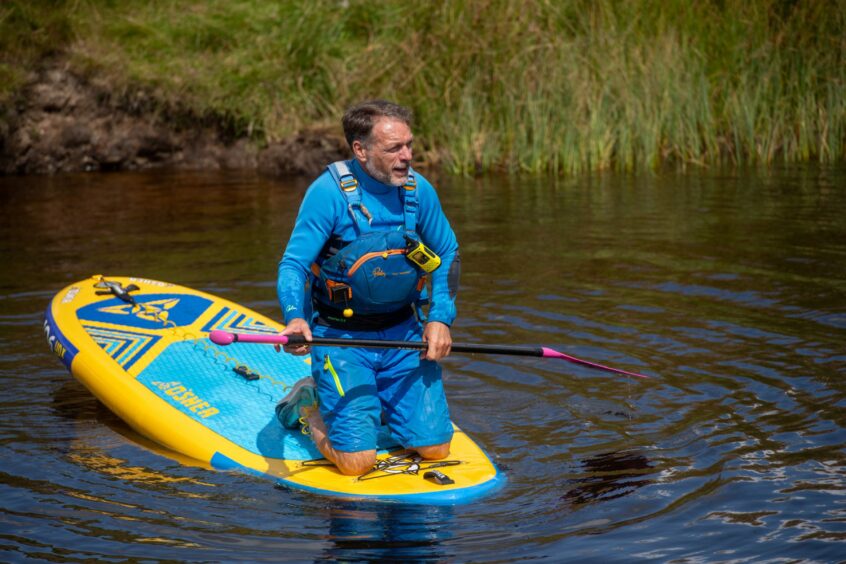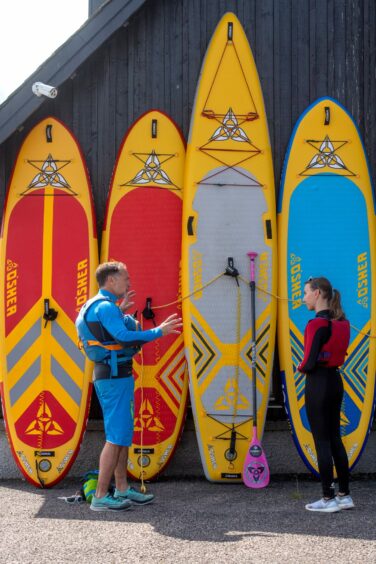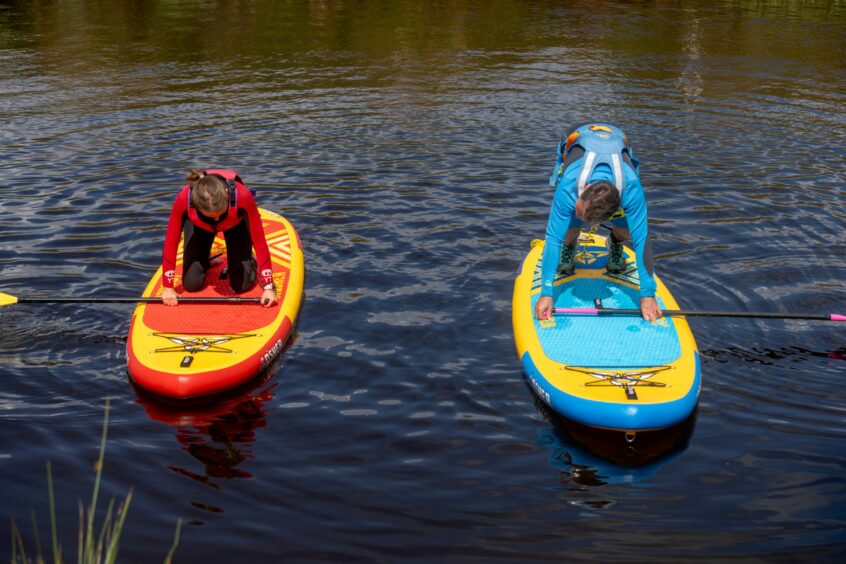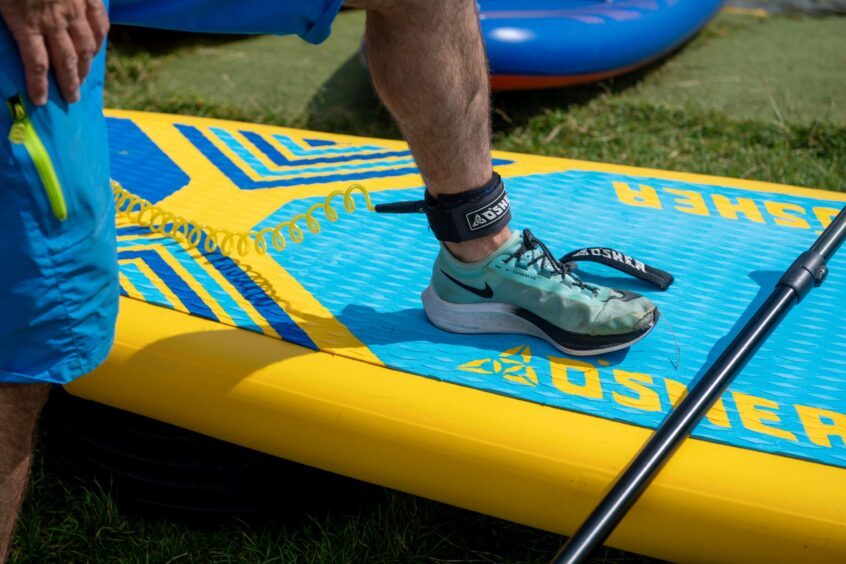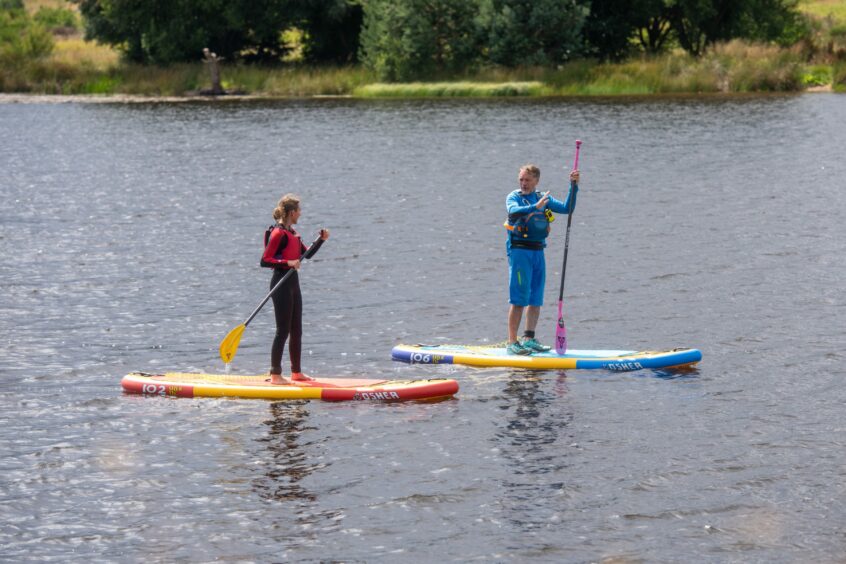Whether you’re a paddling pro or are just starting out, there’s a lot to remember when taking to the water.
Stand up paddle boarding (SUP) is becoming increasingly popular – but that means our emergency services are now being regularly called out to help those who find themselves in difficulty.
Last month, coastguards were called out to five incidents in one windy day.
The P&J headed out to Knockburn Loch, near Banchory, to get some safety tips from instructor Jason Topley.
Take it slowly – learn the basics
Mr Topley recommends anyone who is thinking about trying the sport to have a lesson with a dedicated instructor before heading out on their own.
“I always recommend that everybody goes and has a lesson first. Ideally, it would be great to go to a training centre that has a few boards to try.
“We are exceptionally lucky in the area we live, as there’s many people with SUP knowledge.”
Finding the right board is also important.
However, as there are many different sizes and ranges to choose from, knowing which one to get can be tricky.
Mr Topley, who runs SUP school Element67, added: “It’s definitely worthwhile doing some research and trying a few different boards. Don’t just buy one your friend recommended, as that might not be suitable for you.”
‘You need a buoyancy aid’
After finding the right board, a wetsuit, buoyancy aid and first aid kit should be the next three things to invest in before heading out on the water.
A buoyancy aid is a necessity people often leave out. At a starting price of only £30, Mr Topley urges everyone to go out and buy one.
“It’s not always about you, it’s about the person you could be trying to save or look after. A buoyancy aid costs about £30 and it is a decent thing to invest in.
“I have a first aid kit on my board and a tow line to clip onto other peoples boards.”
Another factor to consider when out paddle boarding is having the correct leash.
Mr Topley recommends a coiled leash, rather than a straight one, as there is less chance of it getting caught on under water obstacles.
Some other essentials to invest in over time include a whistle, strobe light, waterproof phone case and tow line.
“You’re always going to have a birthday and a Christmas,” Mr Topley added. “That’s the perfect time to build on your kit.”
‘Be aware of what could happen’
Mr Topley stressed that is not just the kit that’s required – but also the time, and common sense, to research the trip properly before heading out.
Wind speed and tide times are just two of the factors to consider before hopping on the board.
“You need to have some responsibility and foresight into what might happen,” he said.
“The river and sea bring a lot more technical knowledge that you need to have, from tides to windspeed.
“Get out in a loch 10 or 12 times before you even consider going out in the sea.”
Build up your experience slowly
Before heading out in the sea for the first time, book in a session with an instructor. Scot Surf in Aberdeen and Stonehaven Paddleboarding both offer such lessons.
Or, if it’s your first time out on a board completely, go somewhere more sheltered like Knockburn to learn the ropes.
“Get as much experience as you possibly can,” he said. “The social aspect and tranquility of paddle boarding is great.
“I take great pride in seeing someone progress. Seeing them again and again out on the water having fun, whilst being safe in the knowledge they have been taught is great.”
